Newborn babies have tiny tummies, and breast milk is easily digested, which is why they need to feed frequently – usually 8 or more times in 24 hours, around the clock, day and night. You’ll learn to pick up the cues from your little one when the time is right for each feed – to begin with your baby may stir, turn their head or open their mouth. Other cues include stretching or putting a hand to their mouth. To help you spot these little signals from your baby, take a look at pages 22-23 in the Off To A Good Start booklet.
Common feeding questions
How should I feed my baby?
It’s your choice. Experts recommend breastfeeding for a number of reasons, and you can find out more on our page why breastfeed? However, everyone is different, so choose what’s right for you and your baby. Some women find it challenging, or can’t breastfeed even if they want to. Lots of mums decide to express their milk, and feed their baby by bottle. And other mums choose to bottle feed using formula. If you decide to use a bottle, hold your baby close in your arms and tilt them slightly backwards, making sure their head is supported and the teat is full of milk.
No matter which way you feed your baby, your midwife or health visitor is there to help you and there’s a lot of good advice in our section on feeding your baby.
What if I'm finding it difficult to breastfeed?
Breastfeeding is a skill that you and baby need to learn, but trust us, practice makes perfect. There’s nothing more natural or healthier for you and your baby, but equally nothing can really prepare you for it. So don’t be too hard on yourself, and remember to just take it one feed at a time, step by step.
And remember, if you have any difficulties or you’re worried about anything, you’re not alone – just talk to your midwife or health visitor as soon as possible, and they’ll help you.
You can also call the National Breastfeeding Helpline on 0300 100 0212 for advice and support, 9.30am – 9.30pm every single day of the year. All calls are answered by highly trained volunteers who are also mums who have breastfed, and the service is both confidential and non-judgmental.
I've heard about blocked milk ducts. How will I know if this happens to me?
If you are breastfeeding and start to feel shivery, experience pain, or you notice a red patch or small lump in your breast, it could be a blocked milk duct. Sometimes milk does not make its way down the duct as usual, and may cause a blockage which causes the swelling. The most common cause is incorrect positioning and attachment, so it’s very important to work on this.
Blocked milk ducts are a common concern among women who breastfeed, and most common about two weeks after the birth. Although they sometimes clear on their own without treatment if the baby has a good feed, they often progress to become mastitis - and that’s when you will feel shivery and have a red inflamed and tender patch on your breast.
If you can deal with it quickly, it will go away easily but call your midwife, health visitor or the National Breastfeeding helpline on 0300 100 0212 (9.30am – 9.30pm every day of the year) if you need more help.
You can download more useful information about breastfeeding here.
The NCT website has more information, including self-help methods which can be useful for both blocked ducts and mastitis.
How do I know if my baby is hungry?
You’ll probably find very quickly that your baby starts to do certain things to show you they’re ready to be fed. They might turn their head, stretch or move their hand to their mouth. Learning these cues could help you stop any crying early, too – and this gets easier to spot with practice. Find out more about picking up on your baby’s cues here.
How can I tell if my baby feels full?
You’ll soon learn to spot the signs that your baby’s had enough milk. When they come off your breast and look sleepy and happy, hold them over your shoulder and gently rub their back until they burp. If they look awake after burping, see if they want more milk. Generally, if they look sleepy and content, they’ve probably had enough. Wet and dirty nappies are also a good indication that your baby is getting what they need.
The first 3-4 days after the birth can be quite challenging for a new mum and it’s common to feel anxious about how much milk your baby is getting. Have a good look through our breastfeeding section and you’ll find lots of information about what’s normal in the early days, what to expect, and how to tell if your baby is getting enough milk.
As a quick guide:
- Most mums will produce enough milk for their baby. Giving supplements of formula milk is sometimes necessary but, in most cases, it interferes with milk production.
- Most babies are sleepy and tired after the birth, and feed infrequently in the first 24-36 hours.
- After the first 24-36 hours, most babies become quite thirsty and feed often. The feeds seem to go on for quite a while at times.
- Around 3-5 days, most mothers feel their breasts become fuller and tender and the colostrum changes to become less concentrated and higher in volume.
This is all normal, and clears out the thick tarry meconium stool to ensure that your baby is protected from infection.
After the birth, your baby has a bit of a rest and is then ready for the long and frequent feeds that stimulate your breasts to get into full milk production. Healthy newborn babies have very small tummies and have a supply of fluid and fat stores to keep them going for a few days until they become used to feeding and their mum’s breasts fill.
If you need some reassurance, it’s a good idea to chat to your midwife or health visitor. It’s very unlikely that the reason would be that you’re not producing enough milk, so go easy on yourself.
How do I stop cracked nipples?
This can happen as a result of breastfeeding, and might be because your wee one isn’t attaching properly to your breast. Your midwife or health visitor will be able to help you get a better position, or give you some ideas to help soothe and heal.
The most common challenging situation that new mums face in the very early days is when their baby is a bit too sleepy and not keen to attach to the breast. Or, sometimes babies are keen to feed, but the mum finds it difficult to attach the baby to their breast.
If you’re concerned about attaching your baby to your breast, here are some pointers to help you:
- It’s the most common issue mums face, and most babies will feed when they are ready.
- Breastfeeding takes practice, but once you and your baby get used to it you should both find it gets much easier.
- Express your milk by hand and by breast pump in the short term to stimulate your breasts. Give your baby the colostrum, and don’t panic if it’s a small amount to start with. This is completely normal and it will increase.
- Give your baby lots of skin contact, and try to help your baby attach by holding them close, making sure their head is free to move, and watching for a wide open mouth. You can follow simple steps with photographs to help you find out more about the breastfeeding positioning and correct attachment in our guides. There’s also a video you can watch to see the correct and incorrect attachment.
- Your midwife is there to help you. There may also be breastfeeding support workers, peer supporters or Infant Feeding Advisors on site for extra help. Just ask.
Are leaking breasts normal?
Don't worry if your breasts leak when you’re first breastfeeding (or even if you’re not breastfeeding). It may feel strange, but it's completely normal. It happens most in the early days when your breasts are full or when your body thinks it's time for feeding. Try using breast pads – these help stop milk leaking onto clothing and make it less noticeable. Most mums find that the leaking stops as their bodies learn to produce enough milk for their baby’s needs.
How do I express?
Expressing milk is a great way to give your baby your nutrient rich breastmilk if you’re not able to breastfeed, need to go out without your baby, want to let your partner feed your wee one or some women just don’t want to breastfeed and prefer to express their milk and that’s a very valid choice. It’s a good idea to either rent an electric breast pump or invest in buying a small electric dual breast pump that lets you express both breasts at the same time. Its much quicker and less tiring. You can find out more about expressing here.
What should I do if I'm formula feeding?
For their first year, babies should only drink breastmilk, or first stage formula milk if you are not breastfeeding. You’ll be able to use a small amount of pasteurised cow’s milk in cooking from 6 months, and even more after a year. There’s lots of information on bottle feeding, including how to make up formula and a guide on what formula to use.
If you are formula feeding, always make sure you sterilise all the equipment, and aim for responsive bottle feeding to help you build a loving bond with your baby. Your little one will feel the most safe and secure if only you, as the main care giver, carries out their feeds for the first few weeks, and after that, only you or your partner. Hold your little one close to you, as skin-to-skin contact can help calm your baby and strengthen the secure attachment. Gently invite them to take the teat of the bottle, and keep eye contact while they’re feeding. You can find out more about feeding your baby responsively when they show feeding cues here.
If your baby appears to be uncomfortable at any time (for example, turning away from the bottle, feeding too quickly or too slowly, or being sick afterwards) there may be simple steps you can take to turn any feeding problems around. It’s important to let your baby pace the feed, and respond to the cues to wind your wee one. Don’t try and push your baby to take more than their tiny tummy needs. Pacing the feed, small, frequent feeds and responding to your baby’s cues solves most problems. If you have any concerns, talk to your midwife or health visitor as soon as you can for help and advice.
You can find out lots more about bottle feeding here.
More information
If you’re worried about feeding your baby, get help immediately from your midwife, health visitor or visit our breastfeeding section.
 Activities & Play
Activities & Play Behaviour
Behaviour Childcare
Childcare Development & Growing Up
Development & Growing Up Family, Friends & Relationships
Family, Friends & Relationships Feeding Your Baby
Feeding Your Baby Food & Eating
Food & Eating Health & Safety
Health & Safety Mental Health & Wellbeing
Mental Health & Wellbeing Money & Work
Money & Work Online Behaviour & Safety
Online Behaviour & Safety Pregnancy & First Days
Pregnancy & First Days School & Education
School & Education Sleep
Sleep

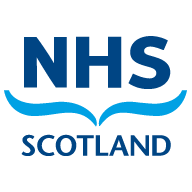

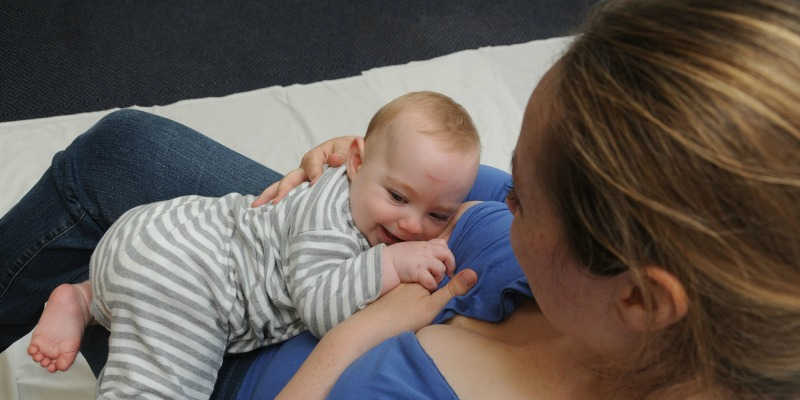
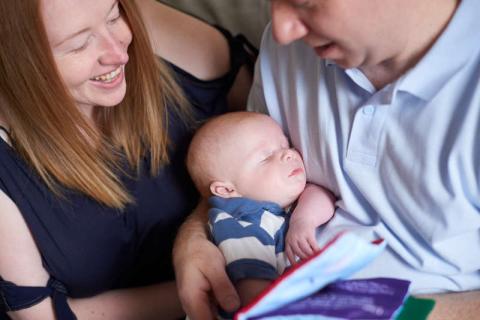

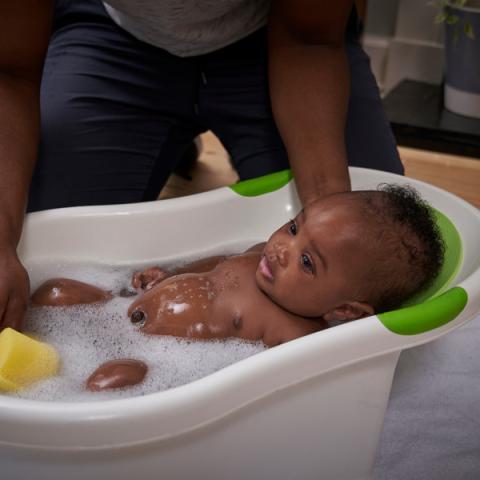
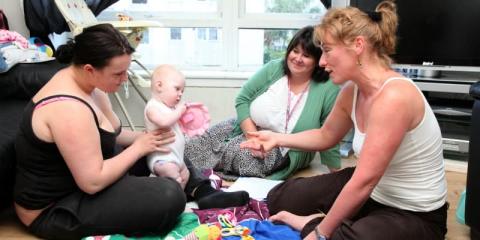


 Pregnancy & First Days
Pregnancy & First Days
 Sleep
Sleep